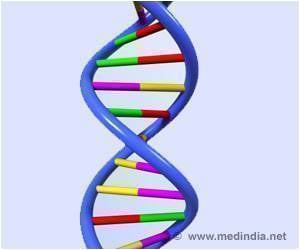At Rice University, the idea that worms can be seen as waveforms allowed scientists to find new links in gene networks that control movement.

One result was the discovery of 87 genes that, when inactivated, caused movement defects in worms. Fifty of those genes had never been associated with such defects, and 37 have implications in human diseases, the researchers found.
Another discovery was the existence of several network modules among these genes. One module detects environmental conditions. Another resides in all "excitable cells" – those types that respond to electrical signals -- in the worm's neurons, muscles and digestive tracts. Another coordinates signals in the motor neurons.
The team also uncovered new details about a protein-signaling pathway found in all animals, Zhong said.
Zhong said the study is the first to provide a system-level understanding of how neuronal signaling genes coordinate movement and shows the value of a quantitative approach to genetic studies. She said the approach could be useful in studies of gene-to-drug or drug-to-drug interactions.
What made the research possible is the fact that cameras and computers are able to see variations in movement that are too small for eyes and minds to notice, Zhong said. "The idea is that if a gene is required for maintaining normal movement and we pick a mutant, the computer should be able to detect the defects," she said.
Advertisement
The Rice researchers, with help from associates at the California Institute of Technology and Howard Hughes Medical Institute (HHMI), analyzed 239 mutant C. elegans, a common worm used in studies since the 1970s. Including a set of "wild-type" C. elegans that was used as a baseline, the Rice lab studied more than 4,400 worms. Each type was ordered from the Caenorhabditis Genetics Center and separated by mutation.
Advertisement
Zhong said the computer tracked 13 points along the length of each worm to analyze 10 parameters of its sine wave-like movement: velocity, flex, frequency, amplitude and wavelength, both forward and backward. "Some moved slower; some moved faster; some had exaggerated body bends. But in our database, it all turns into numbers to describe the abnormalities," she said. "It gives us a detailed profile of the worm's movement that's almost like a fingerprint."
As a practical matter, each worm was filmed for four minutes. Even at that, it took nearly a year to capture all 4,400 mutants in motion.
The Rice researchers analyzed at least 10 worms of each mutant type to see if their particular mutations caused the animals to move in similar ways – which, for the most part, they did. Then they analyzed all mutant data to see whether different mutants move in similar ways. "If they have the same symptoms, then we think these genes are probably involved in the same disorder," Zhong said.
To find how gene networks control particular movements, the team cross-matched metrics that were captured by the computer with data about each gene. "Once we knew how many genes were required for maintaining normal locomotion, we then tried to figure out how these genes interact with each other, how they function together as networks," she said.
The computed gene networks showed interesting features, she said. "Some genes are closely connected to each other but loosely connected to others. When we grouped them, we found several communities," she said. One appears to sense environment via sensory neurons; a second connects neurons, muscles and the digestive tract, "probably encoding some basic machinery in excitable cells." The third network contains genes in "the motor neurons that we expected," Zhong said.
She was most interested to see that the third network revealed evidence that a protein known as G-alpha-Q that also appears in other species – including humans – has a previously unknown target in a signaling pathway that regulates locomotion. The team conducted further experiments to confirm the existence of the new target gene, PLC-gamma. She said previous studies likely missed this target because they were too coarse to detect the subtle movement abnormalities caused by a defect in PLC-gamma.
It's the kind of revelation that could help prioritize genetic tests in humans. "You don't have to test 30,000 genes if we can give you one or two candidates," Zhong said. "At the molecular level, it's likely a lot of these gene-gene interactions are also conserved in humans."
Source-Eurekalert











